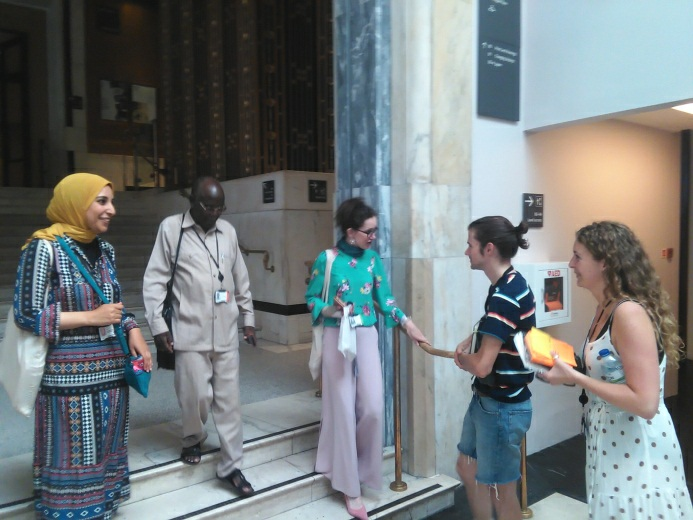Reflecting on My Department Activities and Colleagues (Yasser Abdelrady, ITP 2019, Egypt)
Written by Yasser Abdelrady, Conservator, Nubia Museum, Aswan (ITP 2019, Egypt)
My name is Yasser Abdelrady, I am a Conservator at Nubia Museum, Aswan, Egypt. I am also a member of the Educational Department staff. It is the first time for me to visit the UK and I hope that it won’t be the last time. I am here to give a brief introduction to our activities in the department of Ancient Egypt and Sudan during the ITP 2019.
On Thursday 11th July 2019, my ITP colleagues and I spent departmental time in the Egypt and Sudan Department. The first session was with Marta Mroczek, Manager of Data Inventory. She showed to us the database of the British Museum Collections and its different processes, and she showed the importance of the database and how they can enter the data and track an object so it can be moved anywhere it needs to be.
Then we did an educational activity in Egyptian Exhibitions, after that we held a discussion about our opinion on the activity. We thought about what is similar and different about the British Museum and our home institutions.

Then we had a meeting with E&S Volunteers. We were shown the great role of the volunteers in the British Museum. The Museums has around 500 volunteers.
The next department time for us was on Thursday 25th July 2019. The first session with Rob Florance and Eloise Hendy, who are responsible for the British Museum’s social media and online enquiries. They showed how their roles help gather audiences’ opinions, and how they upload material on the social media.
Then there was a session with Marcel Maree (Curator) about circulating artefacts. He showed his new project about preparing databases about lost objects, and the role of different people in order to record any object they had seen in art galleries. In addition, he showed the criteria and the processes of identifying real objects, and how do you can know if the people have a real license or not.

The next session with John Taylor (Curator), he spoke about his new project in studying the number of coffins from the 1950 – 1750 BC. He showed the process of his study and some scientific results which he will published later. Then we joined him on a tour inside organic storage to see wooden coffins and some related objects.
After that we did a tour with Daniel Antoine (Curator) of the human remains storage. He gave us a brief introduction about his studies and the best way for the storage of human remains. He also showed us his recent studies and recent scientific results which will be published at a later date.
Yasser
